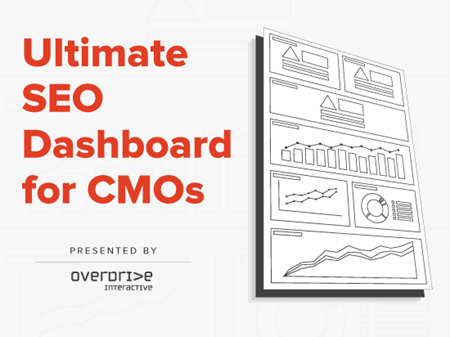E-commerce Website Redesign
Enterprise eCommerce SEO
Enterprise eCommerce SEO is often more complex for retailers than it appears and often involves manual curation and data merging.
While most marketers focus on other marketing strategies, SEO for an E-Commerce store is unique from those used by local businesses, corporations, and nonprofits. Although SEO for E-Commerce sites is different from other types of websites, it is still a vital part of an overall marketing strategy. In fact, it is estimated that 39% of all global eCommerce traffic comes from search engines (enterprise international SEO is especially important for multi-national and multi-regional online businesses, while hyperlocal enterprise SEO is vital for eCommerce stores with physical locations).
Ultimate SEO Dashboard for CMOs – Webinar Slides & Video
Learn how to create an SEO dashboard that will captivate and educate CMOs to reveal the true value and ROI of SEO.
Watch the Webinar
Important E-Commerce SEO Components
A large-scale eCommerce store has several components that contribute to its success. Three of the most important include:
- Proper use of keywords and site architecture can help your store reach the top of search results.
- In addition to proper keyword usage, your E-Commerce site should be mobile-friendly and responsive, enabling it to display content and function properly on a variety of desktop, smartphone and tablet devices.
- It should also use a logical page structure, with headings and subheadings to make browsing easier and content more digestible.
Optimize E-Commerce Content Pages
Content is still “king,” so optimize every page of your site. Add fresh, relevant, informative content on a regular basis, such as new blog posts, company or industry news/updates, and products, which will signal to the search engines that your site is active, growing and relevant.
Hyperlinking pages to other related articles and product pages is also important for eCommerce SEO.
And don’t forget to include your target keyword in your URL strings, which is a core part of a solid on-page SEO marketing strategy.
Optimize E-Commerce Product Pages
Along with optimizing content pages, SEO for eCommerce stores involves optimizing product pages, which will undoubtedly contain images and/or videos. Image optimization helps your site rank better in search results and attracts potential customers from social media channels. While any image can add to the message, using only high-quality image files and optimized videos help make the product stand out.
Image sizes and other guidelines depend on your site host, but as a general rule of thumb, images should be high-resolution and compressed to under 20kb when possible.
It is essential to follow image optimization best practices to improve the user experience and increase your website’s click-through rate and ultimately, sales.
E-Commerce SEO Services
If you’ve been running your eCommerce business for any length of time, you’ve probably noticed competitors eating up more of your audience, sales, and traffic. You need to fight back to remain relevant, win new customers and retain the existing. For this reason, you need to implement advanced SEO strategies that go beyond basic search engine optimization (especially in cases of enterprise SEO website migrations and consolidations).
Enterprise E-Commerce SEO services can boost your business’s online visibility and influence customers during the decision-making process. A strategic approach to search engine optimization that focuses on your business goals and brand position will help your business dominate the search engine results and grow revenue, thanks to your site being prioritized in the SERPs (search engine results pages).
eCommerce Page Content & Linking Strategies
A holistic approach to search engine optimization means optimizing every aspect of a website to rank well for important, relevant keywords. The website pages should consist of optimized, unique copy and media to provide relevant, helpful information to the visitor while naturally incorporating your target keywords and internal links.
Internal links work hand-in-hand with external links to increase the rankings of pages throughout the site. Internal links pass page authority from one of your website pages to another to ultimately improve rankings, while external links (links pointing to your domain from other domains) indicate to the search engines how popular and relevant your site is. The more relevant your site is, the more likely it is to be shown higher in the search results, and thus, the more likely that users will visit your site, engage and convert.
eCommerce Product Optimization
By optimizing your product pages for the search engines, potential customers will be more likely discover your site and complete purchases. You will be in a better position to get qualified customers and grow your business.
Technical eCommerce SEO Strategies
The goal of an enterprise technical SEO strategy is to ensure the crawlers can efficiently find and successfully index your website pages and products. This includes often and regularly monitoring your site for issues such as broken links, broken pages, improperly redirecting URLs, slow page speed, poor mobile usability, and more using Google Search Console, Screaming Frog, Deepcrawl (now Lumar), and other enterprise SEO tools. And then fixing.
E-Commerce SEO Strategy Benefits
Enterprise SEO strategies are crucial for sustaining the organic growth of an online enterprise and maintaining brand integrity. An agile marketing strategy with a focus on organic SEO will help you weather tough economic times and see you safely through Google algorithm updates. Consumers turn to the search engines for answers, so having a solid eCommerce SEO strategy in place is a must.
While SEO can be fairly complex, the end results can be substantial and well worth the effort. A well-executed SEO strategy can raise an eCommerce store above the competition and boost its online sales by staggering amounts. Additionally, while it may seem like a difficult task, it’s possible to boost rankings quickly and easily by following SEO best practices, such as those described in the following section.
E-Commerce SEO Best Practices
An E-Commerce website is not the same as a traditional brick-and-mortar store, and it requires different strategies and approaches than a traditional website.
For example, consider large-scale retailers such as the home improvement store Home Depot and furniture retailer Ethan Allen. These companies use features to optimize their websites for users with various disabilities, including screen readers for people with blindness. They make the shopping experience easier for users with visual impairments. Along with other SEO best practices, ensuring your eCommerce website is user-friendly to anyone with a visual impairment is especially important for your bottom line – web accessibility cannot be ignored.
Great Website Content
Having valuable page content is essential for search engine optimization, as it garners favor with the search engines and protects your site against Google algorithm updates aimed at weeding out the more irrelevant and unhelpful results.
For example, Google’s May 2020 Core Update aimed to punish industries with thin content while rewarding those with high-quality, relevant content. This algorithm penalized many gaming sites while boosting news, business, and health sites.
When working on your eCommerce site content, a good practice is to use the EAT principle (Expertise, Authoritativeness and Trustworthiness). Content that meets Google’s EAT principle is essential for future eCommerce SEO best practice adherence. Incorporating this principle into your website’s content will help to improve SERP rankings and increase brand exposure.
Along with adhering to EAT principles when writing content, ensure your website pages do not contain duplicate content. The search engines can find and flag instances of content copied across pages and in the worst case, issue a penalty and lower your rankings on the SERPs.
Aim to produce unique copy on all your pages along with customized headings and subheadings, meta titles and descriptions, all of which should naturally incorporate important keywords your page is targeting that you’d like to rank for.
Meta Titles & Descriptions
One of the most important components of your SEO strategy is your attention to optimized meta titles and descriptions. Each indexable page should have a unique meta title and description that the search engines can easily digest.
Meta Title Best Practices
Meta titles should follow SEO best practices, which include the following:
- 35-55 characters in length (including spaces).
- Naturally incorporate highly relevant keywords for the page (preferably those with high search volume). For E-Commerce product pages, the product name and important specifications are included, space permitting.
- Do not contain duplicated words (use space efficiently and concisely).
- Space permitting, include a pipeline with your brand name at the end. For example:
- “Product A Name | Your Company Name”
- Meta titles are unique on individual pages (not duplicated across multiple URLs).
Meta Description Best Practices
Meta descriptions should also follow SEO best practices, including the following:
- 130-155 characters in length (including spaces).
- Naturally incorporate highly relevant keywords for the page (preferably those with high search volume) and do not repeat (use space efficiently and concisely). For eCommerce product pages, the descriptions should include important specifications of the item, as well as the product name.
- Include a call-to-action (CTA) at the end.
- Meta descriptions are unique on individual pages (not duplicated across multiple URLs).
H1 Page Titles
H1 (Heading 1) page titles are important, as they improve the user experience, accessibility, and help the search engines better understand the page. Each indexable page on your site should contain a unique, optimized H1 heading.
H1 Best Practices
- Each page should contain a heading formatted as an H1 near the top of the page, which serves as its title, tells the visitor what they are looking at, and states what the page is all about. The H1 heading should be located below the main navigation header bar and above the bulk of the page content.
- Use only one H1 title per page.
- Naturally incorporate important keywords the page is targeting.
- Try to make the H1 compelling.
- Aim for shorter H1 titles (under 70 characters, spaces included).
Product Descriptions
Creating a high-quality product description is vital to increasing your website’s search engine rankings. While there are no hard and fast rules, effective product descriptions must include important information and in general, be between 300 and 800 words, with 1,000 words for high-selling items.
Product descriptions should be written clearly and contain helpful, accurate information that customers will find the most useful. Think about things that the customer cares about, such as product price, dimensions, materials, use cases, technology, what differentiates it from the competition, how it can improve their life, etc.
Product descriptions should be unique and never duplicated across other products or descriptions on other websites (such as manufacturers’ sites, for example).
Canonical Tags
Using canonical tags on your eCommerce site pages is important. The canonical lets the search engines know which page should be receiving the “credit” for the content it contains, along with the credit for content that is highly similar or the same on other related pages. This prevents duplicate content issues and gives your “master” page a better chance of showing higher in the search results.
For example, if you have Page A and Page B, both with highly similar or identical content, but no canonical page chosen as the “master,” the search engines will not know which page should be prioritized to be shown in the search results and you could be hit with duplicate content issues that hurt both pages. For example:
Page A (the chosen “master” page – https://www.PageA.com) Canonical Tag:
<link rel=”canonical” href=”https://www.PageA.com” />
Page B (https://www.PageB.com) Canonical Tag:
<link rel=”canonical” href=”https://www.PageA.com” />
Canonicalization Best Practices:
- When choosing canonical pages, in general, go with those you prefer to be shown in the search results that would be relevant and appeal to a broader audience rather than specific “site search” pages, faceted navigation pages or the like.
- Any pages that are not canonicalized to another page should be self-canonicalized (they contain a self-referencing rel=”canonical” tag in the <head>). For example:
<link rel=”canonical” href=”https://www.yourwebsitepagehere.com” />
- Do not apply more than one canonical tag per page.
- Canonical tags should be placed in the <head> section of the page code.
- Do not canonicalize pages back to each other. For example, Page A should not be canonicalized to Page B if Page B is already being canonicalized to Page A, and vice versa.
- Pages should only be canonicalized to 200 HTTP status, indexable pages that are not being redirected, noindexed, are broken or giving errors.
- Pages should not be canonicalized to any pages being blocked by your robots.txt file, as this could confuse the search engines.
- Any pages being canonicalized to a different page should not be included in your XML sitemap.
Customer Reviews
Gathering authentic customer reviews can increase your organic traffic and help your business to stand out on Google. Both on-site customer reviews and Google reviews written online are great for your SEO. eCommerce sites can also benefit from using the free Google Customer Reviews service, aimed at customers who made purchases on your site.
Encourage your customers to leave Google reviews by sharing your business-specific URL with them. The reviews can be fast and easy – all the customer really needs to do is choose a star rating and leave a quick comment.
Managing your Google customer reviews is also important. You can easily do this through your Google My Business Profile on both Google Search and Google Maps. Regularly checking and responding to customers (especially any unhappy ones or those with questions) builds customer trust. Both positive and negative reviews are a good thing, as potential customers tend to find a mix of both to be more trustworthy, honest and objective.
As with on-page SEO, your off-page SEO efforts should also include outreach and partnerships. Outreaching through forums and Q&A websites is a great way to promote your initial offers. You may also want to try HARO (Help A Reporter Out), which is an alternative to article marketing. Creating quality links on relevant websites will help your site sustain higher rankings over time.
Advanced SEO for eCommerce
If you’re evaluating your SEO strategies, you might have wondered how to integrate advanced SEO into your enterprise eCommerce website.
Basic SEO focuses on simply getting your website found by search engines and attracting traffic.
Advanced SEO involves applying usability logic, progressive search methodologies, and additional metrics for competition analysis. Advanced SEO also involves site structure optimization.
The takeaway here:
In order to be the most effective, your SEO strategy should not only align with your business goals, but take all aspects of your website content, technical elements and site structure into account beyond the basic functionalities that allow it to be seen on search and win visitors. You want your eCommerce site to really thrive, not just survive.
Choose Your eCommerce Website Template Wisely
A lot of eCommerce sites use templates. They’re not ideal from an SEO standpoint, because most of the pages are almost identical. They’re also often ugly and don’t entice clicks as well as you’d like. The solution? Use a hybrid approach – use a customized template you have as much control over as possible and make sure you’ve got a great developer on hand.
eCommerce Homepage Priorities
Your homepage is the most important page and should clearly state who you are, what you offer and provide easy-to-find, highly visible links to all relevant pages – category pages in particular.
It should also contain information about or links to pages dedicated to your company story, special offers, important announcements, and contact details, including links to your business’s social channel profiles.
Faceted Navigation Strategies for eCommerce Sites
An enterprise E-Commerce site with many products and types of products should use faceted navigation to help users sort through the vast number of options and refine their searches. Not only is this a better user experience, but also helpful for the search engines to recognize your site architecture and structure, including which pages are the most important.
However, there can be pitfalls to using faceted navigation, such as duplicate content issues due to multiple URL variations, diluted link equity due to internal links spread across many URL variations, and crawl budget waste by the search engines due to them crawling all the duplicate pages. So it’s important to really manage your faceted navigation well in order to avoid these risks and enjoy the benefits.
Schema & Structured Data Markup
A great way to try and increase site visibility is to use schema.org structured data markup on as many pages as possible. Schema is microdata added to webpage HTML that helps the search engines understand what information is contained on your website pages, leading to more accurate search results, rich results, and higher click-through rates.
To improve SEO for enterprise eCommerce websites, add “Review” and “Product” markup to your product pages’ <head> sections. “Breadcrumb” markup is also great to use on all your site pages utilizing them.
- How to add “Product” structured data
- How to add “Review” snippet structured data
- How to add “Breadcrumb” structured data
Before publishing, ensure your markup is free of errors and warnings by testing it with the Schema Markup Validator.
SKUs, GTINs & ASINs
While we may be more familiar with product SKUs than GTINs, the latter are actually more important for an eCommerce website when it comes to SEO.
GTINs are essentially the same thing as SKUs, but are used as inventory keeping units with their own benefits: they are easier to search, and are often more relevant to a particular product.
Amazon uses ASINs as a unique product code internal to the Amazon eCommerce ecosystem.
SKUs, GTINs, and ASINs should all have related product descriptions, pricing, images, videos, and bullets describing key features used on ecommerce platforms.
Track Competitors & Monitor Your Goals
Keeping tabs on your top competitors is important to ensure you’re staying on top of your game and highly relevant. In addition to monitoring how your competition is ranking for important keywords you share, you should be tracking their backlink profiles as well to identify new linking opportunities.
Understanding your website goals for your business is important. You should be setting goals based on where you’re currently at vs. where you’d like to be. Once you have this piece in place, regularly monitor your progress and see how it stacks up against where your competitors are at. Having this awareness will serve you well not only within your company, but also with your customers and future customers who have yet to discover you. When it comes to enterprise SEO, know your competitors as well as you can – there’s no guarantee you’ll beat them unless you know what they’re doing.
Enterprise eCommerce SEO FAQs
What is enterprise SEO?
Enterprise SEO refers to search engine optimization for enterprise-level eCommerce websites and includes best practices for content pages, product pages, and technical website functioning that adheres to search engine rules and standards.
How to use SEO for eCommerce?
Search engine optimization is the process of improving the visibility of an eCommerce website or webpage in a search engine’s unpaid results listings (often referred to as “organic,” “natural” or “earned” results).
How is enterprise SEO different?
Enterprise SEO specifically involves more advanced optimizations focused on product SKUs, GTINs, ASINs, schema and structured data markup, faceted navigation, customer product reviews and more.
Why is SEO important for eCommerce?
Search engine optimization is important for eCommerce because it helps your website rank higher on the search engine results pages (SERPs) and improves user experience, encouraging purchases, conversions and return visits.
Scale Your SEO Program
Overdrive will provide the talent, technology, and process required to stand up, maintain, and optimize an always-on SEO program.

































